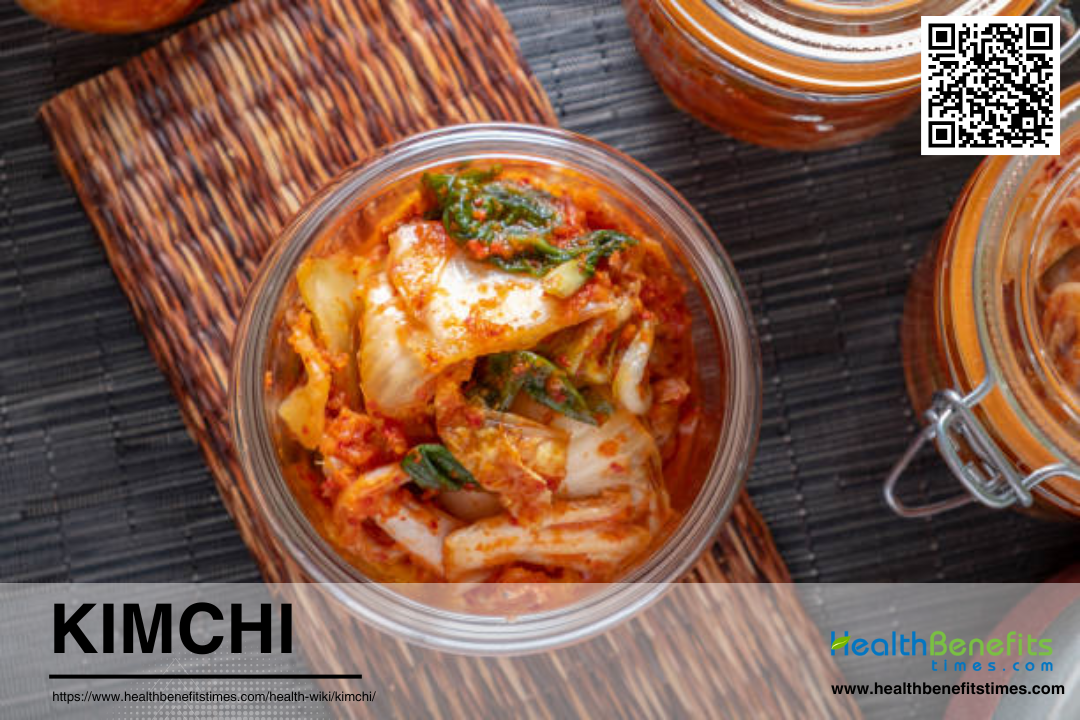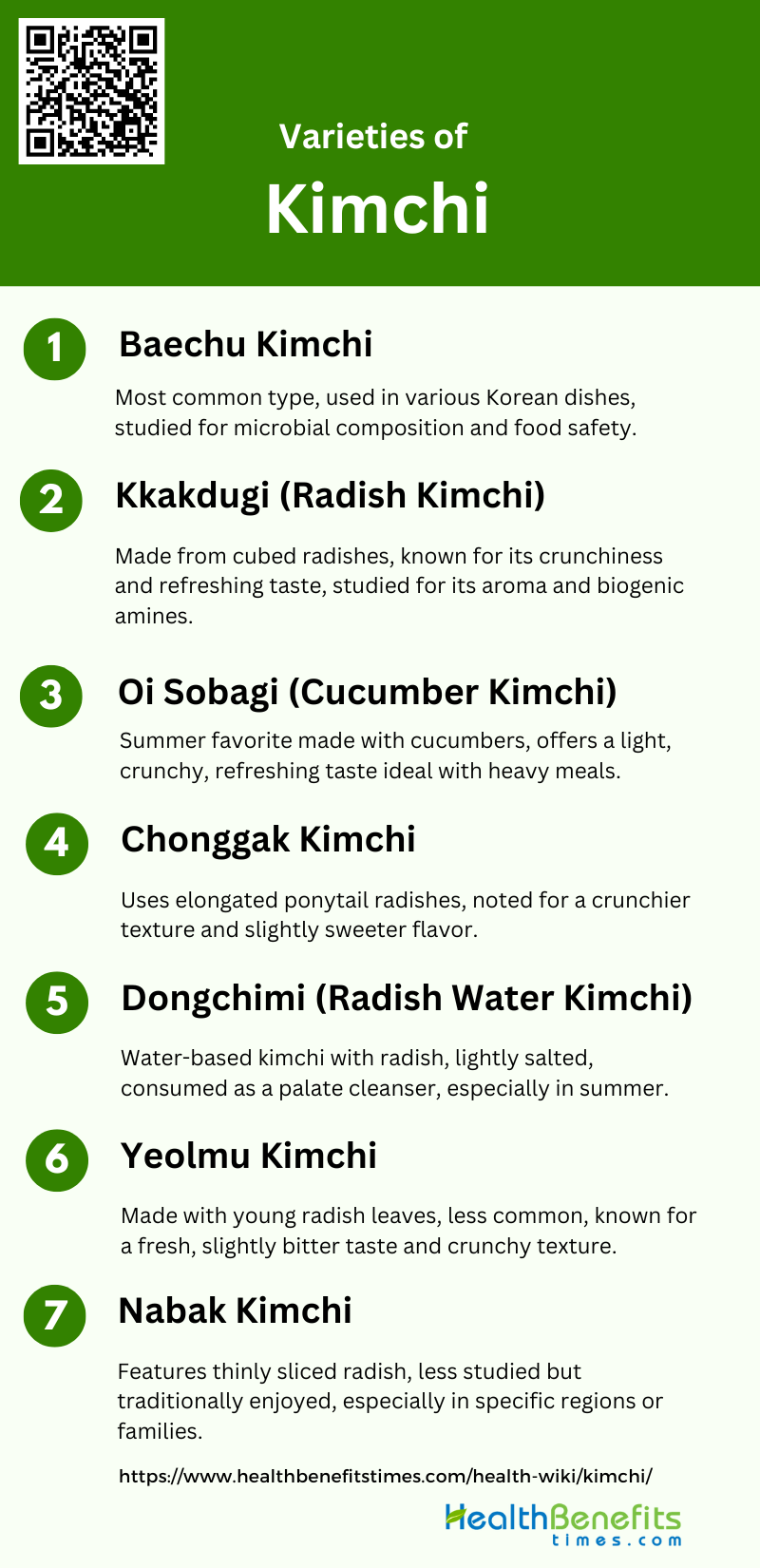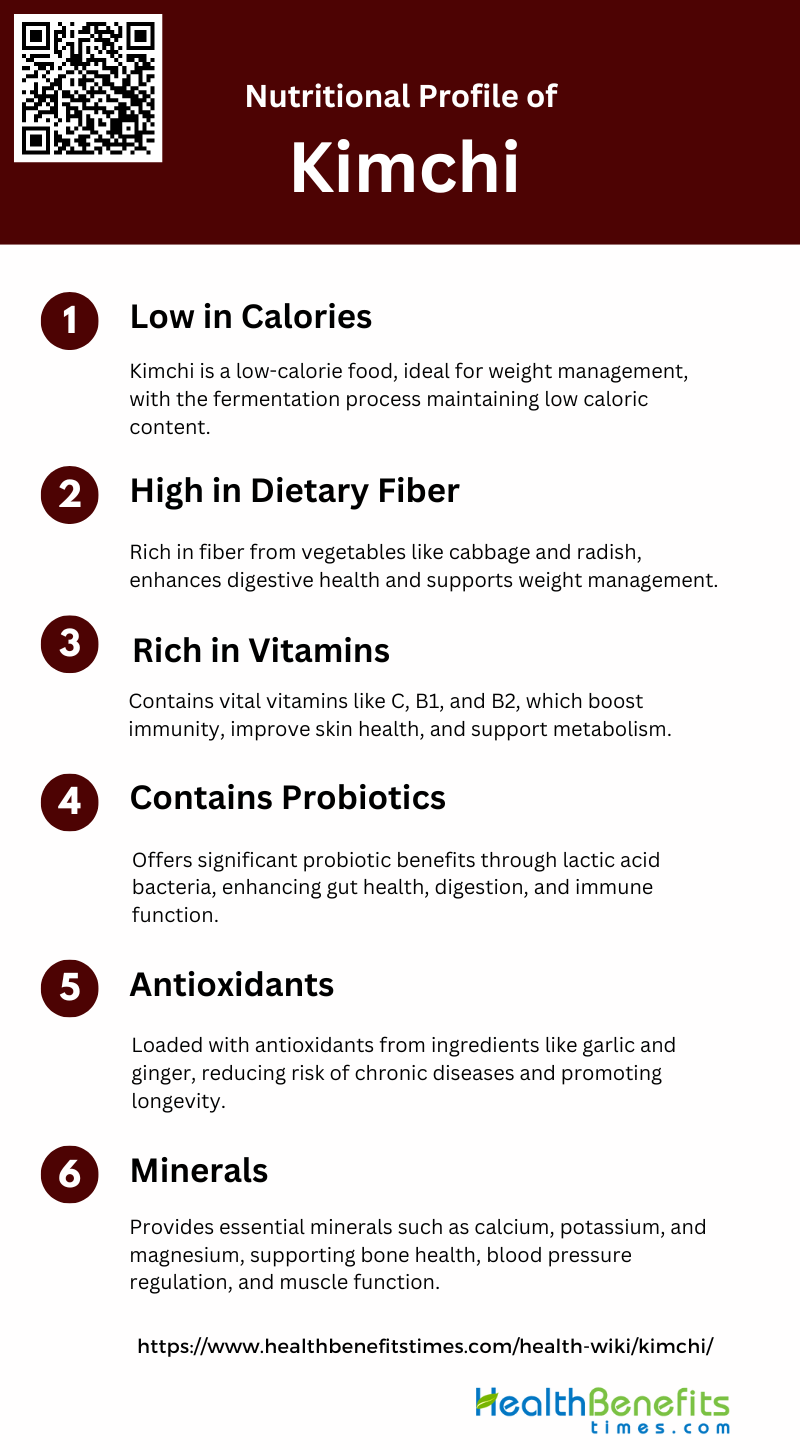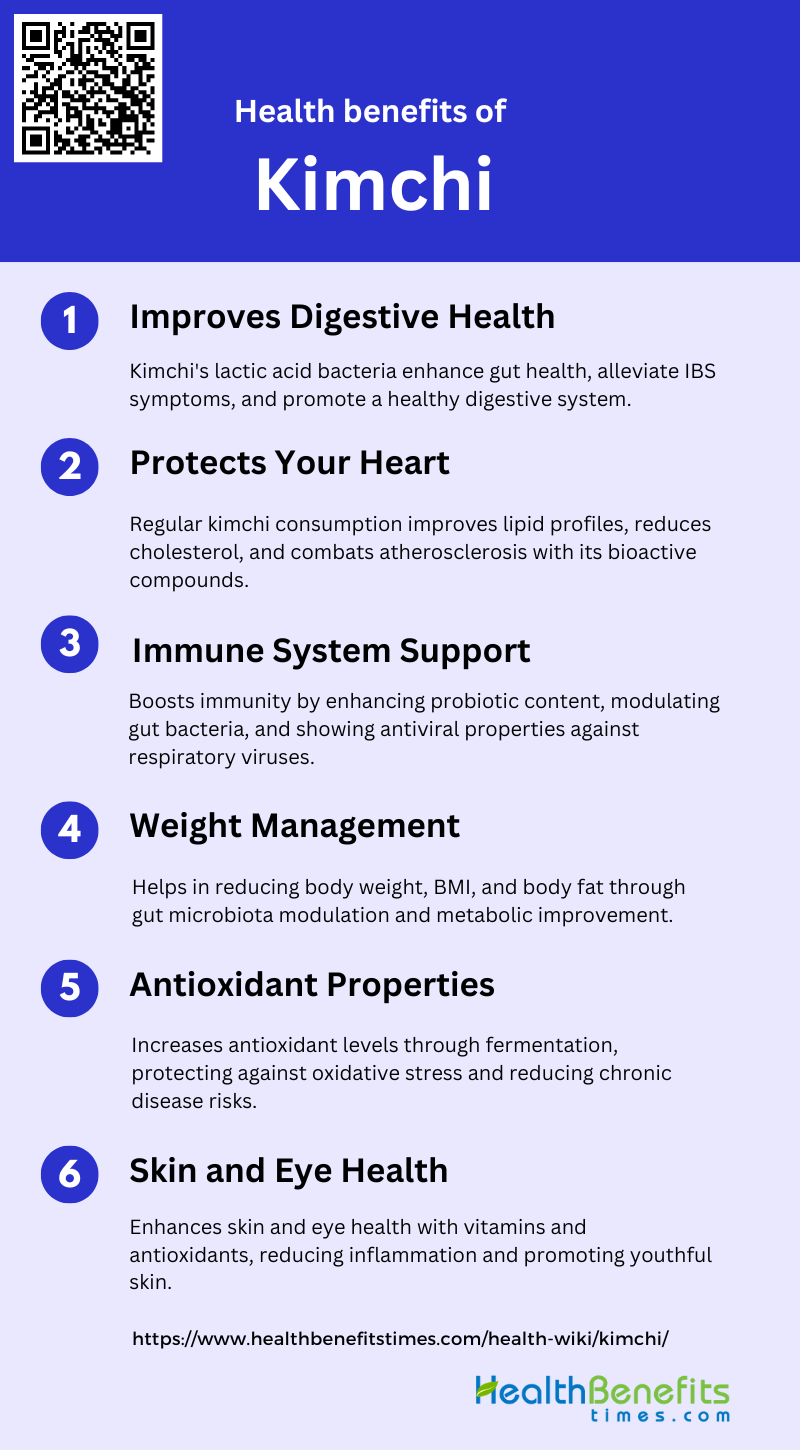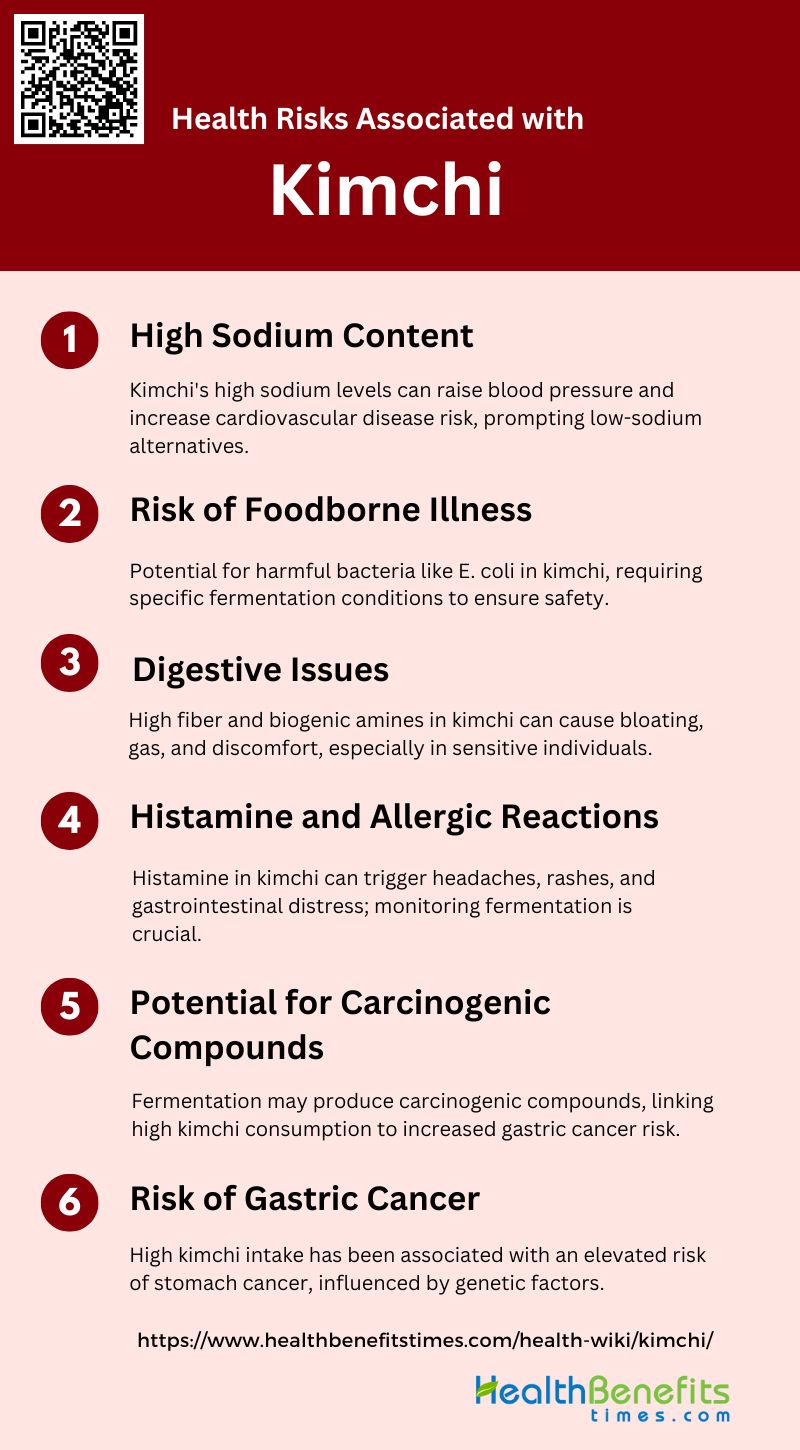Kimchi is a traditional Korean fermented vegetable dish that has become a cultural icon and a staple in Korean cuisine. It is made by pickling various vegetables, most commonly napa cabbage and radish, with a seasoning paste of chili powder, garlic, ginger, and fermented seafood such as salted shrimp or fish sauce. The fermentation process, which can take several weeks, not only preserves the vegetables but also creates a unique tangy, spicy, and umami flavor profile. Kimchi is renowned for its probiotic properties and nutritional value, as the fermentation process increases the bioavailability of vitamins and minerals. It is an integral part of Korean meals, often served as a side dish or used as an ingredient in various dishes, and its cultural significance has led to its recognition by UNESCO as an Intangible Cultural Heritage of Humanity.
Brief history of kimchi
Kimchi, a traditional Korean fermented food, has a rich history that dates back thousands of years. Contrary to some claims that kimchi has only existed for a century, historical records indicate its presence as far back as the Three Kingdoms period, around 1,500 years ago. The introduction of red pepper, a key ingredient in modern kimchi, occurred in the 17th century, further evolving the dish into its current form. Ancient Korean documents, such as the “Samkuksaki” and various cookbooks from the Joseon Dynasty, provide evidence of kimchi recipes and the use of fermented vegetables. Additionally, the Korean red pepper, or gochu, which is integral to kimchi, has been cultivated in Korea for thousands of years, debunking the myth that it was introduced from Central America during the Japanese invasion in 1592. Thus, kimchi is deeply rooted in Korean culture and culinary history, showcasing a long-standing tradition of fermentation and vegetable preservation.
Varieties of Kimchi
There are many varieties of kimchi, each with unique ingredients and preparation methods. Here are some popular types:
1. Baechu Kimchi (Napa Cabbage Kimchi)
Baechu kimchi, made with napa cabbage, is one of the most common and popular varieties of kimchi. It is a staple in Korean cuisine and often considered the standard kimchi. The search results mention baechu kimchi frequently, indicating its widespread consumption and importance. Studies have analyzed its microbial composition , biogenic amine content , and even the survival of pathogens like Salmonella during fermentation . Baechu kimchi is a crucial ingredient in many Korean dishes like kimchi jjigae (stew) and bokkeumbap (fried rice).
2. Kkakdugi (Radish Kimchi)
Kkakdugi is a type of kimchi made with cubed radish as the main ingredient. It is another widely consumed variety, often ranked among the top kimchi types in surveys. Several studies have focused specifically on kkakdugi, analyzing aspects like biogenic amine content, aroma compounds, and microbial composition during fermentation. Kkakdugi is appreciated for its refreshing taste and crunchiness, making it a popular choice alongside other kimchi varieties.
3. Oi Sobagi (Cucumber Kimchi)
Oi sobagi, or cucumber kimchi, is a refreshing and crunchy variety made with cucumbers. While not as prevalent as cabbage or radish kimchi in the search results, it is still a well-known and enjoyed type of kimchi, especially during the summer months when cucumbers are in season. Its light and refreshing taste makes it a nice accompaniment to heavier dishes.
4. Chonggak Kimchi (Ponytail Radish Kimchi)
Chonggak kimchi is made with ponytail radishes, which have a distinct elongated shape. It is a popular variety, with several studies analyzing its biogenic amine content, fermentation characteristics, and microbial composition. Chonggak kimchi is appreciated for its crunchy texture and slightly sweeter taste compared to other radish kimchi varieties. It is commonly consumed alongside other kimchi types.
5. Dongchimi (Radish Water Kimchi)
Dongchimi is a type of water kimchi made with radish. Unlike other radish kimchi varieties that are fermented, dongchimi is a lightly salted and refreshing dish. It is often consumed as a palate cleanser or side dish. While not as widely studied as other kimchi types in the search results, dongchimi is still a well-known and enjoyed variety, especially during the hot summer months.
6. Yeolmu Kimchi
Yeolmu kimchi is made with young radish shoots or leaves. It is a less common variety compared to the cabbage and radish kimchi types mentioned in the search results. However, one study did note that students had a high preference for yeolmu as a kimchi sub-ingredient, indicating its appeal among certain groups. Yeolmu kimchi is appreciated for its fresh, slightly bitter taste and crunchy texture.
7. Nabak Kimchi
Nabak kimchi is made with thin strips of radish. Like yeolmu kimchi, it is a less widely studied and consumed variety compared to the more popular cabbage and radish kimchi types. However, it is still a traditional kimchi variety that is enjoyed, particularly in certain regions or households. One study mentioned nabak kimchi as one of the categories of radish kimchi analyzed, indicating its place among the diverse range of kimchi varieties.
Nutritional Profile of Kimchi
Kimchi is not only a flavorful addition to meals but also offers a range of nutritional benefits. Here is a general overview of its nutritional profile:
1. Low in Calories
The primary ingredients, such as cabbage and radish, are naturally low in calories. The fermentation process does not significantly increase the caloric content, allowing kimchi to remain a low-calorie food option. This characteristic is particularly beneficial for individuals looking to manage their weight while still enjoying flavorful and nutritious food. Studies have shown that kimchi can be included in various dietary regimens without contributing to excessive caloric intake.
2. High in Dietary Fiber
The high fiber content is primarily derived from the vegetables used in its preparation, such as cabbage and radish. Dietary fiber aids in promoting regular bowel movements and can help in managing conditions like irritable bowel syndrome (IBS). Research indicates that the fiber in kimchi not only supports digestive health but also contributes to a feeling of fullness, which can aid in weight management. The fermentation process further enhances the fiber content, making kimchi a valuable addition to a fiber-rich diet.
3. Rich in Vitamins
Kimchi is a potent source of various vitamins, including vitamin C, vitamin B1 (thiamine), and vitamin B2 (riboflavin). These vitamins are crucial for numerous bodily functions, such as boosting the immune system, improving skin health, and supporting metabolic processes. The fermentation process helps preserve and even enhance the vitamin content of kimchi. For instance, vitamin C levels are maintained or increased during fermentation, providing antioxidant benefits. Studies have highlighted the significant vitamin content in kimchi, making it a nutritious food choice for enhancing overall health.
4. Contains Probiotics
One of the most notable health benefits of kimchi is its high probiotic content. The fermentation process involves lactic acid bacteria (LAB), such as Lactobacillus and Leuconostoc, which are beneficial for gut health. These probiotics help maintain a healthy balance of gut microbiota, improve digestion, and boost the immune system. Regular consumption of kimchi has been associated with various health benefits, including reduced inflammation, improved bowel health, and enhanced immune function. The probiotic properties of kimchi make it comparable to other well-known probiotic foods like yogurt.
5. Antioxidants
The vegetables and spices used in kimchi, such as garlic, ginger, and red pepper, are known for their high antioxidant content. These antioxidants help reduce the risk of chronic diseases, including cancer and cardiovascular diseases. Studies have shown that the fermentation process can enhance the antioxidant properties of kimchi, making it a powerful food for promoting overall health and longevity.
6. Minerals
These minerals are vital for various bodily functions, such as maintaining bone health, regulating blood pressure, and supporting muscle function. The fermentation process helps in the bioavailability of these minerals, making them more easily absorbed by the body. Research indicates that the mineral content in kimchi contributes to its overall nutritional value, supporting a balanced diet and promoting long-term health.
Health benefits of Kimchi
This fermented dish is packed with essential nutrients and probiotics that contribute to overall well-being. Here are some key health benefits of incorporating kimchi into your diet:
1. Improves Digestive Health
Kimchi, a traditional Korean fermented food, is rich in lactic acid bacteria (LAB) which play a crucial role in promoting digestive health. The fermentation process of kimchi involves various LAB, such as Leuconostoc, Weissella, and Lactobacillus, which help in maintaining a healthy gut microbiota by suppressing harmful bacteria and promoting beneficial ones. Studies have shown that kimchi consumption can alleviate symptoms of irritable bowel syndrome (IBS) by increasing dietary fiber intake and reducing harmful fecal enzyme activities. Additionally, the probiotic properties of LAB in kimchi contribute to improved gut health and overall digestive function.
2. Protects Your Heart
Regular consumption of kimchi can lead to significant improvements in serum lipid profiles, including reductions in total cholesterol and low-density lipoprotein (LDL) cholesterol levels. These lipid-lowering effects are particularly pronounced in individuals with higher baseline cholesterol levels. Furthermore, the antioxidant and anti-inflammatory properties of kimchi contribute to its protective effects against atherosclerosis, a condition characterized by the buildup of fats and cholesterol in the artery walls. The presence of bioactive compounds in kimchi, such as 3-(4′-Hydroxyl-3′,5′-dimethoxyphenyl)propionic acid, further enhances its cardiovascular benefits.
3. Immune System Support
The fermentation process enhances the probiotic potential of kimchi, which in turn supports the immune system by modulating gut microbiota and promoting the growth of beneficial bacteria. Studies have shown that kimchi consumption can reduce serum levels of inflammatory cytokines and increase the population of beneficial gut bacteria, such as Bifidobacterium adolescentis, which play a role in immune regulation. Additionally, the antiviral properties of kimchi, particularly against respiratory viruses, further highlight its role in supporting immune health.
4. Weight Management
Kimchi has been shown to aid in weight management and reduce obesity-related parameters. The consumption of fermented kimchi, in particular, has been associated with significant decreases in body weight, body mass index (BMI), and body fat percentage. The anti-obesity effects of kimchi are attributed to its ability to modulate gut microbiota and improve metabolic parameters, such as fasting blood glucose and lipid profiles. The presence of dietary fiber and bioactive compounds in kimchi also contributes to its weight management benefits by promoting satiety and reducing overall calorie intake.
5. Antioxidant Properties
The fermentation process enhances the antioxidant capacity of kimchi by increasing the levels of bioactive compounds with antioxidative properties. These antioxidants play a crucial role in neutralizing free radicals, thereby reducing the risk of chronic diseases such as cancer and cardiovascular diseases. The presence of various functional ingredients, such as garlic, ginger, and red pepper powder, further boosts the antioxidant potential of kimchi, making it a valuable addition to a health-promoting diet.
6. Skin and Eye Health
The consumption of kimchi has been linked to improved skin and eye health due to its rich content of vitamins, antioxidants, and probiotics. The antioxidative properties of kimchi help protect the skin from damage caused by free radicals and environmental stressors, thereby promoting healthy and youthful skin. Additionally, the presence of vitamins A and C in kimchi supports eye health by preventing oxidative damage to the eyes and maintaining good vision. The anti-inflammatory effects of kimchi also contribute to its benefits for skin health by reducing inflammation and promoting a clear complexion.
How to Make Kimchi?
Making kimchi involves fermenting vegetables, primarily napa cabbage and Korean radishes, with a variety of seasonings. Here’s a basic recipe to get you started:
1. Prepare the Cabbage: Cut the napa cabbage into quarters lengthwise, then cut into bite-sized pieces. Dissolve the sea salt in the water and soak the cabbage in the brine for about 2 hours, turning occasionally. This will help soften the cabbage.
2. Rinse and Drain: After 2 hours, rinse the cabbage thoroughly under cold water to remove excess salt. Drain well.
3. Prepare the Seasoning: In a large bowl, combine the Korean red pepper flakes, grated ginger, minced garlic, fish sauce (if using), and sugar. Mix well to form a paste.
4. Mix the Vegetables: Add the julienned radish and chopped green onions to the seasoning paste. Mix well to coat the vegetables evenly.
5. Combine and Pack: Add the drained cabbage to the bowl with the seasoned vegetables. Use your hands (wearing gloves if you prefer) to mix everything together, ensuring the cabbage is well-coated with the seasoning.
6. Ferment: Pack the kimchi mixture tightly into a clean glass jar or airtight container, pressing down to remove air bubbles. Leave some space at the top of the jar to allow for expansion during fermentation. Seal the jar and let it sit at room temperature for 1-2 days, depending on your preference for fermentation. The longer it ferments, the stronger the flavor.
7. Store: After the initial fermentation, transfer the kimchi to the refrigerator. It will continue to ferment slowly and develop more flavor over time.
Health Risks Associated with Kimchi
While kimchi is renowned for its health benefits, it is important to be aware of potential health risks associated with its consumption. These risks can arise from various factors including high sodium content, fermentation process, and possible contamination. Here are some health risks to consider:
1. High Sodium Content
Excessive sodium intake is linked to elevated blood pressure and an increased risk of cardiovascular diseases. Studies have shown that high sodium levels in kimchi can exacerbate hypertension, particularly in individuals with pre-existing conditions. Efforts to reduce sodium content in kimchi, such as using potassium chloride as a substitute, have been explored to mitigate these health risks. However, consumer acceptance of sodium-reduced kimchi varies, indicating the need for balanced approaches to maintain both health benefits and traditional flavors.
2. Risk of Foodborne Illness
Kimchi fermentation involves various microorganisms, including lactic acid bacteria, which can inhibit the growth of pathogenic bacteria. However, the presence of harmful bacteria such as Escherichia coli (EPEC, ETEC, and EHEC) has been reported in kimchi, posing a risk of foodborne illness. The survival of these pathogens can be influenced by fermentation conditions, such as temperature and salt concentration. Studies suggest that using specific starter cultures and maintaining appropriate fermentation conditions can reduce the risk of contamination and ensure the safety of kimchi.
3. Digestive Issues
While kimchi is often praised for its probiotic benefits, it can also cause digestive issues in some individuals. The high fiber content and fermentation byproducts can lead to bloating, gas, and discomfort, particularly in those with sensitive digestive systems. Additionally, the presence of biogenic amines, such as histamine and tyramine, produced during fermentation, can exacerbate these symptoms and lead to adverse reactions in susceptible individuals. Monitoring and controlling the fermentation process can help minimize these digestive issues.
4. Histamine and Allergic Reactions
These compounds are produced by microorganisms during fermentation and can reach potentially hazardous levels. Histamine, in particular, can cause symptoms such as headaches, rashes, and gastrointestinal distress. Ensuring proper fermentation practices and monitoring biogenic amine levels are crucial to reducing the risk of allergic reactions associated with kimchi consumption.
5. Potential for Carcinogenic Compounds
The fermentation process of kimchi can lead to the formation of potentially carcinogenic compounds. Studies have indicated that the high salt content and certain chemicals produced during fermentation may contribute to the risk of gastric cancer. Specifically, the consumption of kimchi has been associated with an increased risk of gastric cancer in individuals with certain genetic polymorphisms. Understanding the interaction between dietary factors and genetic predispositions is essential for assessing the carcinogenic potential of kimchi and developing safer consumption guidelines.
6. Risk of Gastric Cancer
Kimchi consumption has been linked to an increased risk of gastric cancer, particularly in populations with high intake levels. The high salt content and specific fermentation byproducts are believed to play a role in the carcinogenesis of stomach cancer. Case-control studies have shown that individuals with certain genetic polymorphisms are more susceptible to the carcinogenic effects of kimchi. These findings highlight the importance of moderating kimchi consumption and considering genetic factors when assessing cancer risk.


